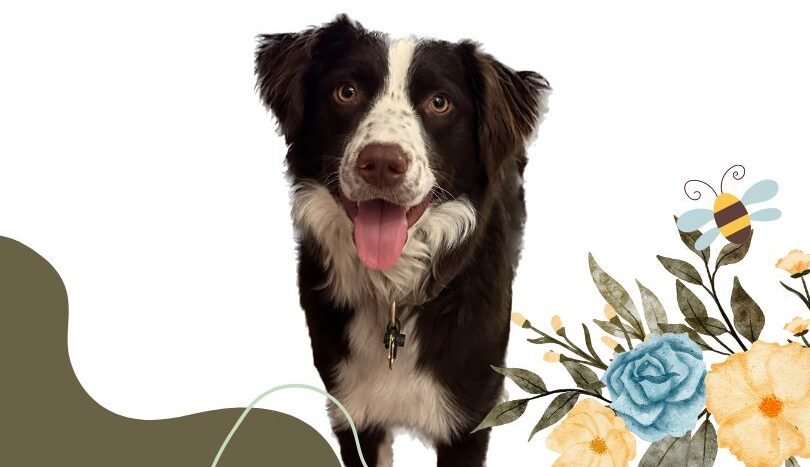Does Springtime Weather Impact Reactivity?

Does behavior change with the weather? In the case of spring, sometimes! Here are some ways the nice weather can contribute to challenges you may face with your pup:
Reactivity on Walks
I owe my awareness of my environment to my experiences working with dogs who display reactive behaviors, including my own pup. My almost-one-year old puppy, Weaver, can be dog-reactive. We work hard on it, and have been making progress that I am very happy with! When she has had an appropriate amount of physical exercise beforehand, our walks are usually relaxing and enjoyable. Her reactions are minimal as long as I am connected to her and well prepared. She can ignore most dogs now! However, I am anticipating that the nice weather will bring about change for us.
What to Expect
Springtime means there will be an increased likelihood that we’ll experience triggers at a higher rate than we did when it was cold out. I will need to work harder to be the supportive teammate she needs me to be while she adjusts. There will be more dogs hanging out unattended in yards that we pass by, more dogs walking with their people past our home and on our usual routes. Additionally, my safe zones (places where I can be alone with my dogs – certain parks, trails, parking lots etc.) will become busier. This changes things not only for my own dog, but for the dogs I work with that struggle with remaining calm around strangers, skateboards, kids, dogs, small animals, cars… the list goes on. It also means their dedicated guardians will have to step it up, too! We are going to have to get creative and flexible with planning, and sharper with our mechanics.
What it Feels Like
Being on the opposite end of the leash from a dog displaying reactive behaviors (barking, pulling, lunging, growling etc.) on a walk is stressful. You may experience physical discomfort in the form of a raised heart rate, strain to your muscles, raised blood pressure, or shaking hands. You may also experience frustration, embarrassment, guilt, anger, shame, incompetence, conflict, fear or isolation in those moments. Whether you have been working through the behavior with your dog for some time, or reactivity just popped up in your training journey, there is no denying that it can be jarring. Not to mention the pressure of knowing your dog is struggling in those moments, and feeling like you can’t help them.
What You can do
Spring is of course still an exciting season! Our surroundings go from gray to green almost overnight, and the world comes to life a little more. I can understand why people who have reactive dogs dread this time of year, however. We have been enjoying our quiet, frigid winter walks, on which our dogs can expect far fewer challenges. Don’t worry, because our dogs – or rather, their behavior and how it makes us feel- have trained us well to:
- Bring high value treats on walks
- Walk at quieter times of the day, when there is less activity around
- Create distance from triggers when they appear, when possible and safe
- Put behavior on cues to be able to clearly communicate what you need from your dog to help them
- Practice good leash handling and dress them in appropriate gear
- Find alternative ways to provide mental and physical stimulation for your dog
- Rent a local Sniff Spot
- Seek help from a professional when needed
Indoor Reactivity
There are few things as refreshing as opening the windows of your home after 3 months of cold temperatures. It is quite literally a breath of fresh air! However, with those newly opened windows and doors can come behavioral changes in our reactive dogs.
Open windows mean it is easier for your dog to hear, smell and see what is going out outside of their home. For some dogs, this access to the outside environment may prompt different reactions to triggers than in winter months. For example, my dog Murphy frequently barks at anyone approaching our home to deliver something. In order to do their job, delivery workers have to pass our large front window onto our front porch, drop off the package and walk back. This gives Murphy quite a lot of time to bark at them – about 10 seconds from arrival to departure. When the windows are closed, it is unlikely that he will wake up from a deep sleep to rush the window and bark because he doesn’t hear them approach. He doesn’t hear the truck pull up, the truck door close, the beep confirming the delivery, and placing of the package… none of it.
However, when the windows are open, he likely will perk up at the sound of the truck door closing, and will be barking by the time they are in front of the window. Thankfully, we have practiced and prepared for this scenario, seeing as it is one I am faced with weekly, if not daily. Our routine looks like this:
- Murphy hears a potential visitor and alert barks (it is a short, sharp, worried bark that actually sounds like a question mark).
- He decides he needs to investigate and runs to the window from wherever he was
- His bark changes in tone from alert to “I am going to drive you away with my voice!”
- I recall him and he disengages from the trigger and runs to me
- I connect this choice to disengage to a reward by excitedly walking with Murphy to the fridge for a piece of cheese
- In the meantime, the delivery person successfully dropped off a package without facing a large barking dog and we are all happy.
For the most part, now Murphy’s barking no longer escalates past an alert before he is coming to me for praise. Does this sound like your pup? If so, here are some ways to help:
- Team up with a trainer to work through desensitization and counterconditioning to cues that predict someone’s arrival
- Have a fan, noise machine, tv or radio playing to muffle outdoor noise
- Keep your windows closed during busy times in your neighborhood – school pick up/drop off, weekend mornings, after work hours.
- Have high value treats available to reinforce calm, quiet behaviors
- Purchase window film to decrease visibility when windows are not open.
Trust me, I understand that your dog’s reactive behaviors are challenging. I experience them in my own home, and on my own walks. We learn to adjust our behavior, be more prepared, react calmly and research ways to help our dogs. We, including our pups, are all doing our best. There are also ways we can help our neighbors in these moments, such as crossing the street if you know their dog barks in the window, keeping our dogs calm when you see someone struggling with a reactive dog on a walk, and recalling your dog in off-leash environments to give everyone the space they need. Have faith in your dog and in yourself – we’ve got this!






